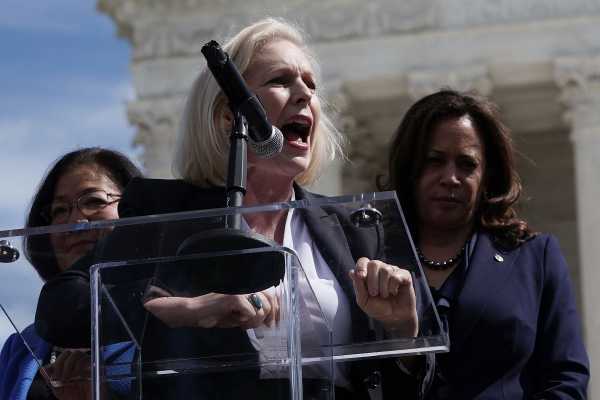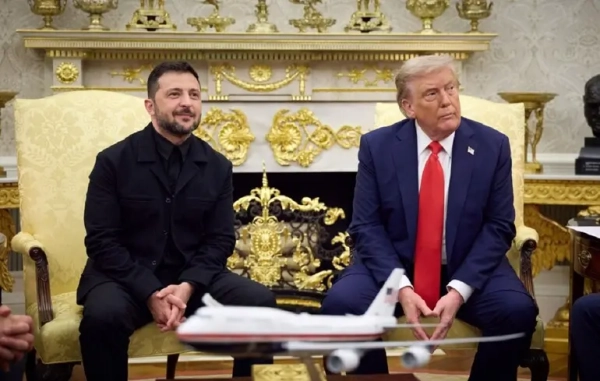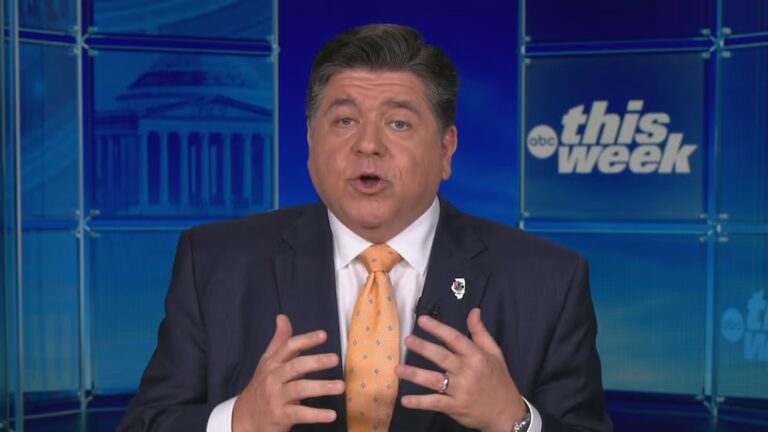
Vox’s internal tracking document of who is “considering” running for president currently includes 34 names on the Democratic side. That’s a huge field.
The list doesn’t track who has said they’re running in 2020. No Democrat has said so at all. Instead, our tracker includes candidates who are doing everything but saying it.
There’s Kamala Harris, a California senator who keeps finding reasons to visit Iowa. There’s Sherrod Brown, the senator from Ohio, whose wife (herself an accomplished journalist) tweeted that they’re thinking about it. And there’s Massachusetts Sen. Elizabeth Warren, who keeps rolling out splashy legislation while developing a sudden interest in foreign policy. And, of course, there’s Joe Biden, who’s made no secret of his continued interest in the White House, and Bernie Sanders, whose team has been holding meetings all year. There’s even former Maryland Rep. John Delaney, the one actually declared candidate in the race.
The field includes a lot of senators, a few governors, a couple of business leaders — even mayors and a Senate candidate who lost.
And while obviously not all 34 of these Democrats are going to stay in the mix long enough to appear on a ballot in Iowa, the odds seem overwhelming that there will be a half-dozen or more who meaningfully contest early primaries.
So why, then, do so many Democrats think it’s worth trying? Because President Donald Trump is unpopular, because and there’s no clear Democratic figure in line for the nomination. These two factors are drawing in more Democrats than in a typical year, setting up a 2020 primary race where anything can happen.
Trump is unpopular
Incumbent presidents usually get reelected. And in part because incumbent presidents usually get reelected, it’s often difficult to tempt top-notch candidates to run against them.
But Trump is different from most incumbent presidents. His initial electoral victory was weak. He lost the popular vote by a hefty 46-48 percent, marking him from the start as an unusually unpopular winner. He followed that up with a distinct lack of humility, and did essentially nothing during the 2015-2016 transition winter to try to reach out to skeptics or assuage doubters.
He then spent 2017 consolidating his position as leader of the Republican Party at the expense of eschewing most of the policy heterodoxy that made him so intriguing as a 2016 candidate. The result is the incumbent is now a fairly generic Republican on issues, who is still weighed down by an unusually large number of scandals and a profoundly unorthodox communication style.
Some of the candidates in the mix aren’t, themselves, particularly big national names — like Brown or Minnesota Sen. Amy Klobuchar. Others aren’t even that popular in their home states; this includes Beto O’Rourke, who just lost to Ted Cruz statewide in the Texas Senate race, and former Housing and Urban Development Secretary Julian Castro, who didn’t dare try to run in 2018. But when you’re up against a president who is weaker by comparison, why not give it a shot?
Meanwhile, everyone knows that whoever wins the nomination is destined to inherit an anti-Trump resistance movement that’s already large and well-organized and demonstrated its enormous grassroots fundraising potential in the 2018 midterms.
None of this means Trump will lose in 2020.
Trump’s net approval rating at this point in his term is the worst of any post-war president. But second-worst was Barack Obama, followed by Ronald Reagan, while both Lyndon Johnson and George H.W. Bush were doing great at this point in their terms.
But politicians need to act on the basis of the information they have available to them, and that information says Trump is unpopular despite a healthy economic climate — and thus he will probably continue to be at least moderately unpopular and thus unusually beatable.
So ambitious people want to run, and there isn’t much standing in their way.
Democrats lack a strong frontrunner
Some elections present themselves with a strong frontrunner.
Vice presidents running to succeed two-term presidents — George H.W. Bush in 1988, Al Gore in 2000 — probably make for the strongest kinds. But you don’t need to formally be vice president to run as a de facto successor (see Hillary Clinton 2016). And candidates with strong family ties to former presidents can become frontrunners by inheriting networks of supporters (see Bush 2000, Clinton 2008, or Jeb Bush 2016).
It’s also possible for someone to be a consensus pick of party insiders in a weaker sense, like Walter Mondale in 1984, Bob Dole in 1996, or John McCain in 2008.
These frontrunners don’t always win, but they usually do — and they structure the race.
The Democrats’ 2020 field, however, doesn’t have a really strong candidate in front. Instead, it has two different candidates — Joe Biden and Bernie Sanders — who are both, in a sense, “next in line.”
But, recapitulating his problem from four years ago, the lack of enthusiasm for a Biden presidency from Obama’s inner circle is palpable. Meanwhile, Sanders hasn’t built bridges with the more leftward leaning members of the party establishment.
On top of that, the fact that Bernie and Biden are both out there makes each of them weaker than they would be alone. Without the other, either one would be the name-recognition candidate; with two well-recognized contenders, nobody has a clear edge.
Nipping at their heels are two other top-tier contenders: Warren — who suggests herself to many as being able to finally put the Bernie/Hillary wars to rest, but who has really failed to assuage doubts about her electability — and Harris, who looks in many ways like a winner on paper but hasn’t demonstrated the kind of charisma on the stump that you normally expect from a presidential candidate.
The bigger the field gets, the more people are tempted to hop in. You don’t need to be overwhelmingly popular to win. You just need to be a bit more popular than anyone else.
Anything can happen in a big field
What truly supersizes the primary field is that a bunch of politicians who would pretty clearly lose a head-to-head matchup with Biden can imagine themselves prevailing against a divided field of opponents.
With everyone racing to the left, maybe Colorado Gov. John Hickenlooper has a shot at owning a moderate lane all to himself and sneaking in. Or with everyone talking about health care, maybe Washington Gov. Jay Inslee has a shot at owning climate change as a distinctive issue and sneaking in.
Or maybe former New York City Mayor Michael Bloomberg could own a lane as a moderate who likes to talk about climate change. And even though he’s in Harris’ wake right now, maybe New Jersey Sen. Cory Booker’s superior stump skills will show through and make him the official unofficial black candidate in the race, giving him a large base of support.
And while former HUD Secretary Julian Castro certainly doesn’t have a typical resume for a presidential candidate, there are no other Latinos in the field, so that could be a good base to start with. But Sens. Kirsten Gillibrand and Amy Klobuchar both do a better job of personifying the woman-led suburban anti-Trump backlash that defines the resistance to the current administration better than any of the aforementioned people.
And in a field that big, really anyone can win. A bunch of veterans of Obama’s campaigns — led by former White House Communications Director Dan Pfeiffer — seem to have decided that Beto O’Rourke is a charismatic dynamo. I’m not sure he actually is. But it’s unquestionably true that, with a dozen people standing onstage and debating, it’s easy to imagine someone breaking through based on raw television presence. So if his fans are right about him, that really might be good enough for Beto to win.
The more people get in, the more plausible any scenario starts to seem. So even more people get in! It might never end.
Nobody knows anything
Four years ago, I would have told you that there is a lurking source of order beneath the appearance of chaos.
With a nod toward the 2009 book The Party Decides: Presidential Nominations Before and After Reform, I would argue that Sanders has fundamentally not transcended his status as a factional protest candidate and can’t win.
Biden’s presence in the field, moreover, I would describe as fundamentally misleading: Party leaders know him well and would be lining up behind him if they wanted him to win. They aren’t doing that because they don’t want him to win, so he won’t.
The real race, I would further argue, is between the “others” — and the problem is simply that they aren’t well-known yet. Party leaders will be extracting policy commitments and watching attentively to see who can give good speeches, who can cut good positive biographical ads, who can take a rhetorical punch, who has skeletons in their closet, and who can perform well in a debate. As that information comes in, the party will coalesce around someone. And that someone — likely a woman, given the overall mood of the party — will win.
That kind of thinking is why a lot of people kept dismissing Trump’s chances in the 2016 GOP primary even though he consistently led in the polls. And that experience is why nobody feels all that confident in making predictions about 2020.
It’s entirely possible that establishment Democrats will simply stay divided in their loyalties and Sanders will win even though they mostly don’t like him. It’s also possible that Biden will gut it out and win based on being broadly liked among Democrats.
In short, nobody has the self-confidence to believe they know anything anymore. And that means any politician looking to convince themself that they’re the Person of Destiny the times call for has a good chance of talking themself into it.
Sourse: vox.com






